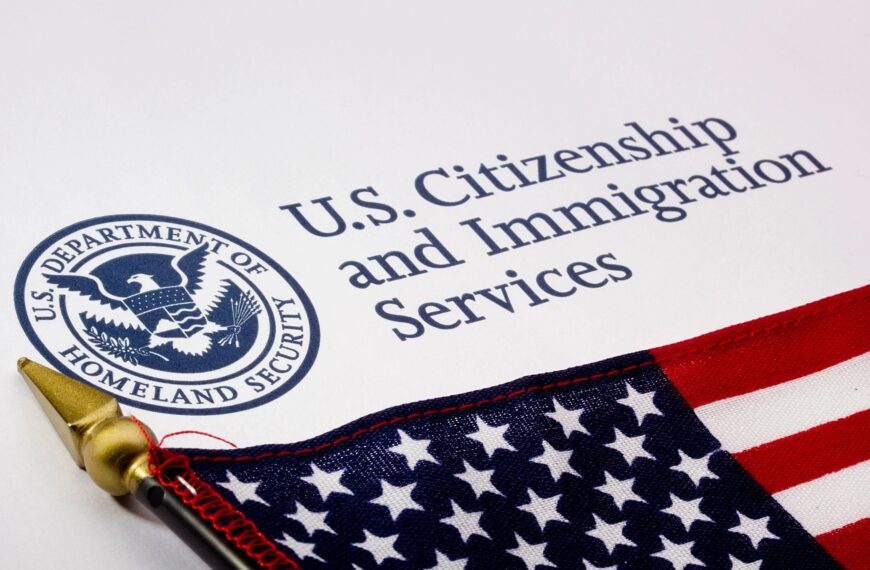The Inconvenient Truth: Chapter 4

The Inconvenient Truth
Australians have a capacity to be direct, and a book written by Australians should be nothing less. Think of this chapter as your friends dishing out some tough love. They just want to be sure that you can separate fact from fiction.
Let’s first address the Elephant in the room
For those who move to the U.S. with the support of their employer, the machinations of relocating to a new city is for the most part transparent. They arrive to a job, an apartment, and their greatest challenge may be finding their new favorite restaurant.
However, the plight of the Aussie who lands in NYC looking for work, is a very different story. They must start from nothing and rely on savings to sustain them throughout their job search. Their hope is that they will be gainfully employed in their sunny new apartment in six to eight weeks because they read on social media that U.S. employers are lining up to hire Aussies.
For most, the harsh reality is that finding work takes between three to six months, and their savings run out well before a second interview. This is the inconvenient truth for many Australians.
Over the past decade we have witnessed the emergence of the E-3 Hopeful. An Australian who may be visiting the U.S. as a tourist, but would see it as an opportunity if they were offered a career in the United States.
No-one should ever tell you that you cannot follow your dreams, especially not in New York. However many Australians are unaware of an U.S. Immigration concept: Immigrant Intent.
Immigrant Intent is a USCIS concept that every foreign national entering the U.S. has the intention to immigrate to the U.S., and it is therefore up to the individual to prove at the time of crossing a U.S. border, that they do not intend to stay in the U.S. and that they should be allowed to enter on a non-immigrant visa.
It becomes complicated for the E-3 Hopeful, as it is the duty of every Border Protection Agent to prevent anyone from illegally entering the U.S. who they suspect is may be looking for work.
Just in case you missed that last point, Immigrant Intent includes entering the U.S. on a tourist visa, to look for work, and a Border Protection Agent will send you back on the next flight to your original destination if they simply suspect you have immigrant intent!
They do not understand that you intention is to find a job and then leave the country to apply for the E-3, and then legally reenter the country on a work visa. In the mind of USCIS, it is black and white: You are breaking the law if you are entering the United States to look for work.
Every year there are hundreds of Australians who have been detained at a U.S. border, and deported for unwittingly telling an Immigration agent that they are here to look for work on a Tourist/B Visa, or posting something that was flagged on their Facebook page or in their LinkedIn profile.
How you explain to a Border Protection Agent your reasons for entering the U.S. on a Business or Tourist visa for any other reason than business or tourism is up to you. However, like any relationship, if you make an early misstep courting Lady Liberty, it could result in a very nasty break up.
USCIS Law is Complicated
Under 9 FAM 302.9-4(B)(3), the 30/60 day rule is used when a nonimmigrant violates his or her status in one of the following ways within 30/60 days of entry:
- Actively seeking unauthorized employment and, subsequently, engaged in such employment;
- Enrolling in a full course of academic study without the benefit of appropriate change of status;
- Marrying and taking up permanent residence; or
- Undertaking any other activity for which a change of status or an adjustment of status would be required, without the benefit of such a change or adjustment.
The 30/60 day rule generally arises with regard to nonimmigrants who enter the United States on B status. The purpose of the 30/60 day rule is to help consular officers determine whether the nonimmigrant willfully misrepresented a material fact regarding his or her application for a visa.
New USCIS Guidance has the 30/60 Day Rule extended to 90 Days!
U.S. Immigration have tightened regulations and are now enforcing denial of applications for change of visa status now within 90 days.
If you are applying for a change of visa status whilst in the U.S., seek professional advice first!
What you don’t know, will hurt you
Discovering that your planned move to the U.S. is based on bad assumptions often comes too late for many expats. The vision of finding work and moving into your own apartment in less than three months is simply unrealistic for most.
Assuming that you will have a job within six weeks is one of the most common bad assumptions.
Common Mistakes in Finding Work
Firstly, if someone told you that finding work in New York is easy -unless you are a CPA with Big Four accounting experience – they are lying. A recent article in News.com.au discussed the challenges facing Australians seeking work in the United States.
“The simple fact is that a surplus of E-3 Visas does not mean a surplus of jobs”
Understanding that finding work is not as simple as most believe, comes as a shock to many Australians. It can take anywhere from three to six months… or longer to find work. For anyone who may be seeking work, there is a real prospect that even after six months, you may still be jobless.
The rookie mistakes are submitting a multi-page CV as opposed to a one-page Resume, having a “.au” in your email address, or a +61 in front of your phone number. Our Perfect Resume template assists members in producing a professional, one-page, U.S. resume.
Feedback from members is that posting on job boards can be a complete waste of time.
The one thing that can most damage your chances of ever finding work is reaching out to employers from Australia: It simply demonstrates a lack of commitment. You have to have boots on the ground to be taken seriously.
An E-3D may find more job opportunities given that they do not have the same professional or full time requirements of the E-3, but it now takes more than 180 days to process an Employment Authorization Document!
E-3Ds face the same challenge of applying for jobs too soon if they do not have their EAD in hand. The Australian Community has been providing guidance based on Recruiter and Employer feedback, which is that it is a very different conversation between “I am still waiting on my EAD” and “I have my EAD”.
For the E-3 Hopeful Aussie, their initial challenges are not only to prove that they are better qualified than an American worker – and explain the E-3 process without using the word “sponsorship” – but overcome further headwinds created by the USCIS promoting the Buy American, Hire American Executive Order to U.S. companies.
In a later chapter, we have recorded a video of an Immigration attorney speaking directly to a prospective employer, explain how the E-3 is very different from an H-1B – so you do not have to. This chapter is written so that you can share this information directly with your employer.
Credit and Banking
Everything from opening a mobile phone account to renting an apartment is governed by your credit rating. There are three Credit Agencies that give you a credit score and they can range between 280 and 900.
In the example above, a good credit score is above 700, however, let’s look at the factors that get you there.
- Amount of Credit – The more credit you have, the better your score.
- How much is Debt? – Paying off your credit card bill each month improves your score just as carrying credit balances forward hurts your score.
- Any late payments? – If you miss a monthly payment, that is a major ding on your credit score.
- Hard Inquiries – If a lender, retail store, or credit card company performs a credit check, this is a ding on your credit score. The more hard inquiries, the more it hurts your score.
- A Mortgage – It is a little chicken and egg, but if you have a mortgage and you pay on time this can boost your score. However, missing a mortgage payment is a worst-case scenario for your credit score.

Special Note: If you receive a “You have been approved…” letter in the mail, ignore it. You are not approved as it is just a marketing ploy by the credit card company.
If you are just starting out you do not have a reasonable score so you will most probably be denied AND the Hard Inquiry will actually hurt your score!
Leasing your own Apartment
With the advent or Airbnb and social media groups, short term accommodation has become a commodity item. Many Expats arrive in the U.S. having already secured some form of accommodation – outside of a Hotel.
Do your homework! Check real estate websites to understand what the real cost of renting is in NYC. Share accommodation will be at least $1,200 to $1,500 per month for the smaller of a two bedroom apartment in an OK area in the City.

The role of a Real Estate Agent or Property Management company in New York is very different to that of Australia.
Here the Tennant can pay a fee to the Agent of 15% to 20% of the annual rent to find an apartment, but what is difficult to fathom is that they always act in the best interests of the Landlord, and not the Tennant!
Living month to month in short term accommodation or in a communal dwelling is clearly not how most Australians envision living in the US. Their goal is to have their own apartment.
Firstly finding an apartment for under $2,500 per month in Manhattan, or even the better parts of Brooklyn and Queens is the first challenge. Where most Australians come to grief is that there is a formula used by Agents to calculate if you can afford an apartment in the first place:
Salary >= 40 x Monthly Rent
If the monthly rent for an apartment is $2,500 per month, then you have to earn at least $100,000 per year!
Your credit score is also an essential consideration when a Landlord or agent looks at a tenant application. Even if you earn $100,000 in this case, if your credit score is low, your application will be denied. A hard inquiry on your credit history may also rub salt into the wound.
Paying six to twelve months of rent in advance can assist in overcoming Landlord concerns, but not everyone has the financial resources to shell out a minimum of U.S. $15,000 to $30,000 up front. This practice is becoming less common with changes to local Real Estate Laws – so check first if this is an option.
If you never have to sofa surf for an extended period of time, fall victim to an accommodation scam, or constantly live with the anxiety about finding your next short term rental, you are among the lucky few.
You can also read an article on how to find and rent your first apartment without a credit history.
Don’t forget to file your Form AR-11 to notify USCIS of your change of address within 10 days – the penalties include fines and Deportation!
Health Insurance
Not having health insurance in the U.S. is like not wearing a seat belt – you can do it, but if something happens, the consequences can be devastating. Travel insurance is not health care and non-residents have eligibility challenges for certain health care plans.
Often, there is no simple way to overcome the health insurance gap between arriving in the US and going onto your new employers health plan or “Obamacare”. Going six to nine months without a health insurance plan is a real prospect for some Expats.
Compared to Australia Health Insurance costs in the US are astronomical. This is why your US Employee Benefits can be as much a consideration as salary when considering a job offer.
To put costs in perspective, a Family plan from the NY Health Exchange can cost $2,000 per month in premiums and you still have a $35 copay for a Doctor visit. A Family could also have to pay $4,000 to $8,000 in an annual deductible, taking their yearly health costs to north of $30,000 if you include Dentistry.
If you think that is expensive, an emergency appendectomy can cost between $20,000 and $30,000.
It is important to understand that not all employers offer immediate health coverage for their new workers. You may have to wait as much as 90 days before your benefits kick in.
Due to its complexity, Health Insurance is covered in this chapter.
U.S. Drivers License
In New York State, the Law says that if you maintain a New York address for 90 Days you are considered a New York Resident. It also states that after 90 days, you have just 30 days to convert International and out of State licenses to a NYS Drivers License.
Simply put, if you intend to drive in New York State for more than 120 days, you need a New York Drivers License.
Social media has made a dog’s breakfast of this subject with anecdotal stories of using your Aussie Drivers license to rent cars, or posts containing “How will the Cop know if you get pulled over”. NY Law says that after 120 days, your Australian license is no longer valid and if you are pulled over it is the same as driving without a license.
Lie to a State Trooper and your day is going from bad to worse. Rule No. 1 applies here – Obey The Law!
Yes, it is inconvenient, but after studying for a computer test, taking a driver education class and passing your driving exam, you are good to go. It’s not as if you need to learn how to drive – other than keeping right instead of left!
The benefits of a NYS license are felt every time you are asked to produce ID. A NYS license carries much greater weight than an Australian license – especially with domestic air travel.
A more detailed explanation on obtaining your NY Driver License is found in Chapter 16.
The only Guarantees are Death and Taxes
Over the last six years, The Australian Community has been assisting its members overcome many of the challenges of living in the United States. Our Public Charity however is not a silver bullet for finding work.
Yes, Employers occasionally post jobs within our Network, but our role is to provide guidance to those seeking work, not to act as an employment agency or a legal firm. If someone were to join our organization with the expectation that they will be offered a job or receive free legal advice, then they would be mistaken.
In NYC it is 80% who you know and 20% what you know. Making a personal connection with a Recruiter or an Advocate within an organization is your best bet to finding work. You can be assured more members have found work by making connections at our events, than posts within our Employment group.
Australians have a mindset for problem solving and finding ways to overcome adversity. This same mindset should never be applied to U.S. Law.
Social media serves as a good reference for day to day challenges and feedback from other Australians on where to find things. However seeking visa advice outside of which Embassy has the fastest E-3 turnaround, can get you into serious hot water.
We are seeing an increase in E-3 applications being moved to Administrative Processing, and this is causing serious concerns for those effected Australians.
Our organization has always recommended seeking professional advice on any matter that effects your Health, Liberty or Finances. We do understand that some E-3 applications are very straightforward, but if your decision not to use a lawyer is based purely on affordability, then how do you expect to pay $3,000 to 4,000 per month just to keep the lights on in NYC?
What Next?
Committing to any relationship is a big step, and moving to New York is one of the greatest commitments you will make.
All too often we hear of Aussies, even with Green Cards, who return home within a few months having failed to find work. New York is not for everyone, even for people born in this country.
Often, the return home is due to a miscalculation of finances, or the length of time it takes for the interview process. More often than not, it was the perception that finding work is easy for Australians, and that is simply not the case.
Our organization does not purport to have all of the answers, but we are quite vocal about educating our members on the right questions to ask. Providing answers is up to the professionals, and we can certainly connect our members to someone who has the right answer!
Click here to read “Moving to the US for Aussies” from the beginning.
Before you send money Overseas!
Use this Currency Converter to gauge how much money you could save over your existing FOREX service by accessing The Australian Community’s Preferred OFX Rate.
Currencies can fluctuate by the minute. This Converter is indicative of the Preferred OFX Rate at this time.
However, once you register and access our Preferred OFX Rate, you will see the current converted rate, and the converted amount before making your transfer.
About The Australian Community
Founded in 2011, we connect more Australians in America.
If you are a professional Australian taking your career to the next level, or the U.S. is the next step in your company’s global expansion, we can connect you to all of the resources you need for success in America.
Did you find this article helpful? Make a Donation!
The Australian Community is a 501(c)(3) organization, and all donations are fully tax-deductible under the IRS Code.
Join The Australian Community.
Learn more about the benefits of joining The Australian Community in America.








